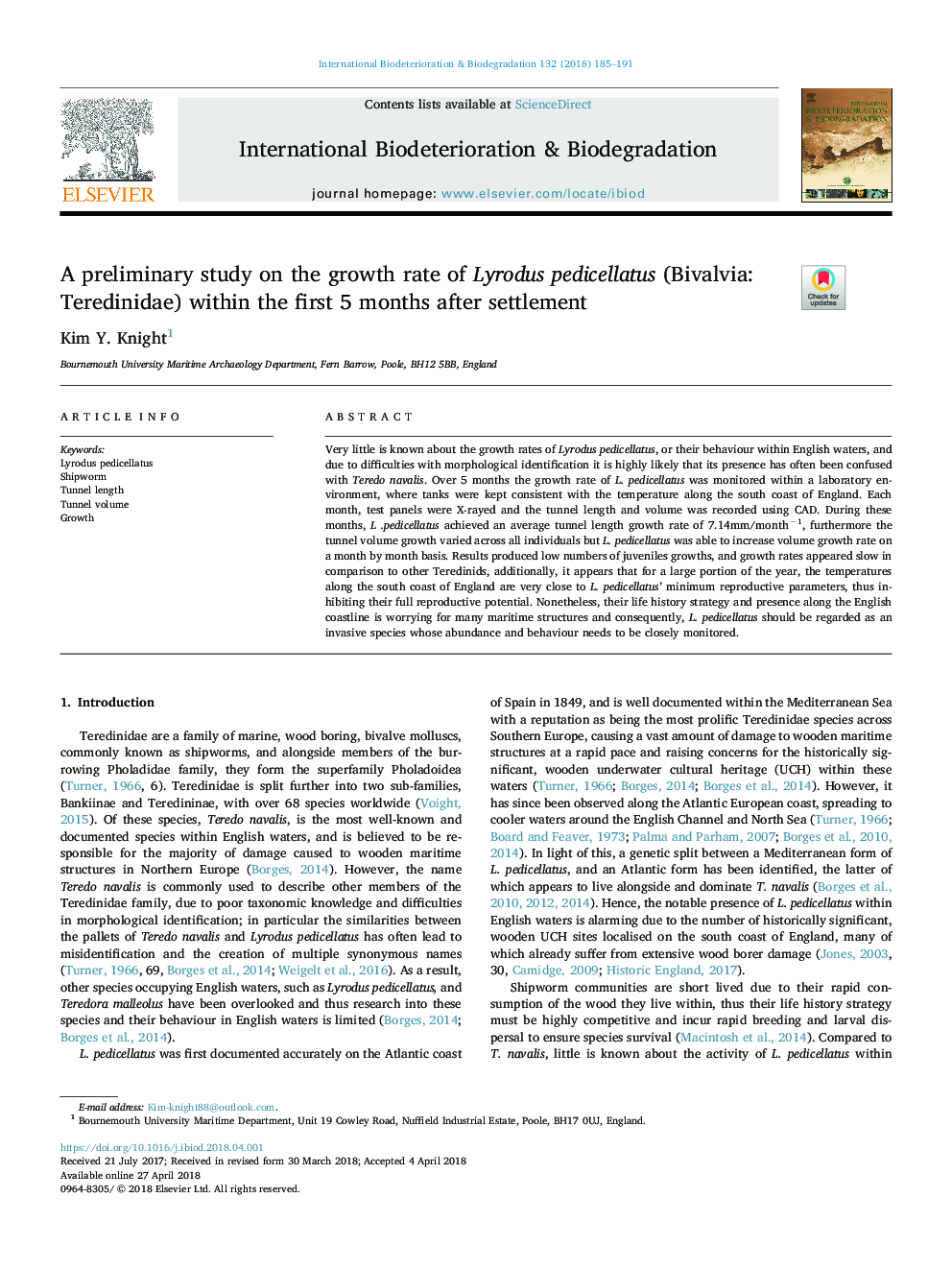| Article ID | Journal | Published Year | Pages | File Type |
|---|---|---|---|---|
| 8843760 | International Biodeterioration & Biodegradation | 2018 | 7 Pages |
Abstract
Very little is known about the growth rates of Lyrodus pedicellatus, or their behaviour within English waters, and due to difficulties with morphological identification it is highly likely that its presence has often been confused with Teredo navalis. Over 5 months the growth rate of L. pedicellatus was monitored within a laboratory environment, where tanks were kept consistent with the temperature along the south coast of England. Each month, test panels were X-rayed and the tunnel length and volume was recorded using CAD. During these months, L .pedicellatus achieved an average tunnel length growth rate of 7.14mm/monthâ1, furthermore the tunnel volume growth varied across all individuals but L. pedicellatus was able to increase volume growth rate on a month by month basis. Results produced low numbers of juveniles growths, and growth rates appeared slow in comparison to other Teredinids, additionally, it appears that for a large portion of the year, the temperatures along the south coast of England are very close to L. pedicellatus' minimum reproductive parameters, thus inhibiting their full reproductive potential. Nonetheless, their life history strategy and presence along the English coastline is worrying for many maritime structures and consequently, L. pedicellatus should be regarded as an invasive species whose abundance and behaviour needs to be closely monitored.
Keywords
Related Topics
Life Sciences
Environmental Science
Environmental Science (General)
Authors
Kim Y. Knight,
